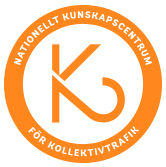Accessibility is increasingly recognised as a key purpose of transport policies. Most of the common practices found both in academic studies and policy planning draw on relatively simple accessibility measures taken as ‘objective’ indicators that only focus on the interaction between land use and transport. Relatively little attention has been paid to heterogeneity in individual characteristics and in self-reported perceptions of accessibility (‘subjective’ indicators), and the corresponding differences with respect to available modal options. This study includes a comparison of (1) ‘objective’ indicators of accessibility to key activities by various modes of transport; and (2) individuals' own perceptions of their capability to access valuable out-of-home activities and the modal options available to them. This study examines the key differences between the two representations of accessibility. The calculated measure was developed using door-to-door travel times to supermarkets and healthcare centres using OpenTripPlanner. The self-reported measure was based on a dedicated capability-oriented travel survey of people aged 65–79 in Sweden's large metropolitan regions: Stockholm, Gothenburg and Malmö. The data were analysed using descriptive statistics and binary and multinomial logistic regressions. The results of this study allow us to gain a greater insight into the ways in which the two accounts differ and can complement one another. We find that conventional methods, by overlooking the heterogeneity in people's perceptions of their accessibility, tend to overestimate accessibility levels and underestimate accessibility inequalities. This study shows how perceived accounts of accessibility can be incorporated into conventional accessibility models and improve accessibility analyses.
